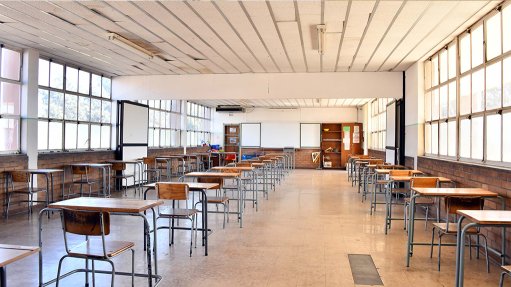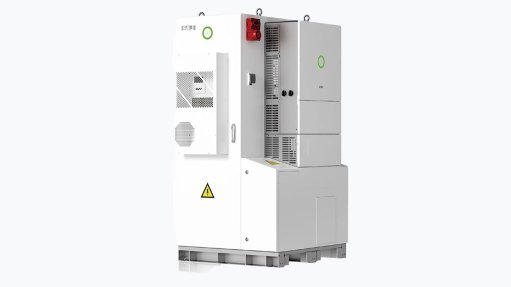Eskom provides update on coal plants where decommissioning has been delayed to 2030
State-owned electricity utility Eskom has provided some additional detail regarding the decision to continue operating 17 coal units across five power stations beyond their original decommissioning dates.
The decision is in line with a May 23 determination by then Forestry, Fisheries and the Environment Minister Barbara Creecy to allow Eskom to operate Hendrina, Grootvlei, Arnot, Camden and Kriel at existing minimum emission standards (MES) plant limits until March 31, 2030.
The units – three at Grootvlei, six at Hendrina and eight at Camden – were planned to be shut down by September 2027, 14 of which were scheduled to close between 2023 and the end of 2025.
The approval was given following a period of intense loadshedding and represented a significant change in strategy, with potential implications for South Africa meeting its decarbonisation goals.
South Africa’s most recent Nationally Determined Contribution (NDC) was lodged with the United Nations Framework Convention on Climate Change ahead of the Glasgow COP of 2021, where an initial $8.5-billion was secured for the country’s Just Energy Transition (JET). The figure has since increase to $13.8-billion.
South Africa is in the process of updating its NDC for submission to the same body in 2025; one that will need to reflect the delayed decommissioning of the five coal power stations.
Eskom CEO Dan Marokane indicated in May that it would still be possible to meet the 2030 NDC target but that a “course correction” would be required.
He also told the Presidential Climate Commission in June that the delay would add about R90-billion to Eskom’s operational costs over the period to the end of the decade, while yielding R102-billion in additional revenue.
Addressing the last day of the National Energy Regulator of South Africa’s nationwide hearings in eThekwini, Eskom Generation GM Eric Shunmagum said the decision to continue operating the units had been factored into its latest revenue application, or MYPD6, covering the next three financial years to 2027/28.
“The total maintenance increase from MYPD5 to MYPD6 is R23-billion,” Shunmagum said, while confirming that R8.4-billion, or 36.4%, of that amount was attributable to the additional maintenance that would be performed at Camden, Grootvlei, Hendrina, Arnot and Kriel.
Overall, Eskom is applying for R88.1-billion for maintenance over the full three-year period and across its three divisions of generation, distribution and the National Transmission Company South Africa. Eskom’s forecasted spend on coal over the three years, meanwhile, has been estimated at R289-billion.
Shunmagum said there was no intention to revive any of the 16 units that had already been shut at Komati (nine units), Hendrina (four) and Grootvlei (three), nor to restart Duvha Unit 3, which was severely damaged in an explosion in 2014 and where Eskom has decided against pursuing a repair. He also stressed that none of the units remained in its regulatory asset base.
However, he argued that it was technically and financially justifiable to continue to operate the five coal stations beyond their 50-year lives considering the MES approval and given the delays in the introduction of anticipated capacity from independent power producers relative to the schedule outlined in the 2019 edition of the Integrated Resource Plan (IRP). Government is aiming to secure Cabinet approval for a 2024 edition during the first quarter of 2025.
The 17 units have a combined capacity of 4 100 MW and Shunmagum reported that they had delivered 9.4 TWh of energy since the start of April, representing 7.2% of total Eskom output.
Besides helping with loadshedding, which has not been implemented since March 26, he said the additional production had also mitigated the need to operate the open-cycle gas turbines (OCGTs) at high levels.
The OCGTs produce electricity using diesel at an extremely high cost of R7 500/MWh and Eskom reports that its diesel costs have reduced by R17-billion year-on-year as the performance of the coal fleet has improved. Eskom still estimates the cost of loadshedding to the economy to be R10 000/MWh.
The delayed decommissioning had also been coupled to a revised repowering and repurposing plans for the aged power stations, which would be implemented ahead of decommissioning.
Eskom is planning to add wind, solar PV and battery storage to land adjacent to the coal stations, while also initiating non-electricity-related activities in proximity to the plants as part of its JET strategy.
Beyond these repowering initiative, Marokane recently told lawmakers that Eskom’s generation division, which is being unbundled, had aspirations to increase its generation footprint to 77 GW by 2040, but with a materially different mix comprising far less coal and including gas, solar PV, wind, new nuclear, and battery and pumped-hydro storage.
No project details or funding plans were provided, however.
Article Enquiry
Email Article
Save Article
Feedback
To advertise email advertising@creamermedia.co.za or click here
Comments
Press Office
Announcements
What's On
Subscribe to improve your user experience...
Option 1 (equivalent of R125 a month):
Receive a weekly copy of Creamer Media's Engineering News & Mining Weekly magazine
(print copy for those in South Africa and e-magazine for those outside of South Africa)
Receive daily email newsletters
Access to full search results
Access archive of magazine back copies
Access to Projects in Progress
Access to ONE Research Report of your choice in PDF format
Option 2 (equivalent of R375 a month):
All benefits from Option 1
PLUS
Access to Creamer Media's Research Channel Africa for ALL Research Reports, in PDF format, on various industrial and mining sectors
including Electricity; Water; Energy Transition; Hydrogen; Roads, Rail and Ports; Coal; Gold; Platinum; Battery Metals; etc.
Already a subscriber?
Forgotten your password?
Receive weekly copy of Creamer Media's Engineering News & Mining Weekly magazine (print copy for those in South Africa and e-magazine for those outside of South Africa)
➕
Recieve daily email newsletters
➕
Access to full search results
➕
Access archive of magazine back copies
➕
Access to Projects in Progress
➕
Access to ONE Research Report of your choice in PDF format
RESEARCH CHANNEL AFRICA
R4500 (equivalent of R375 a month)
SUBSCRIBEAll benefits from Option 1
➕
Access to Creamer Media's Research Channel Africa for ALL Research Reports on various industrial and mining sectors, in PDF format, including on:
Electricity
➕
Water
➕
Energy Transition
➕
Hydrogen
➕
Roads, Rail and Ports
➕
Coal
➕
Gold
➕
Platinum
➕
Battery Metals
➕
etc.
Receive all benefits from Option 1 or Option 2 delivered to numerous people at your company
➕
Multiple User names and Passwords for simultaneous log-ins
➕
Intranet integration access to all in your organisation





















